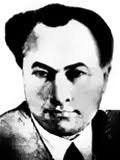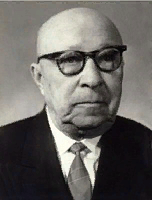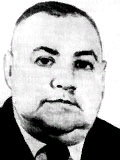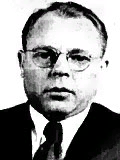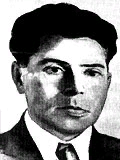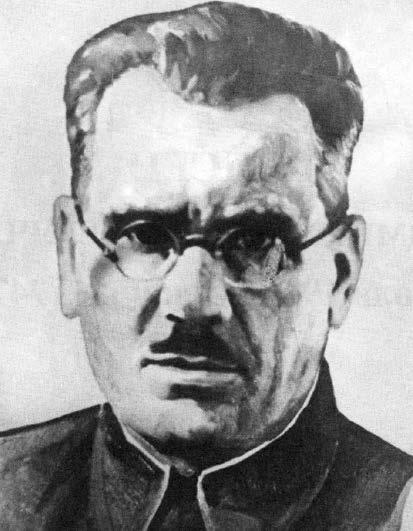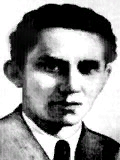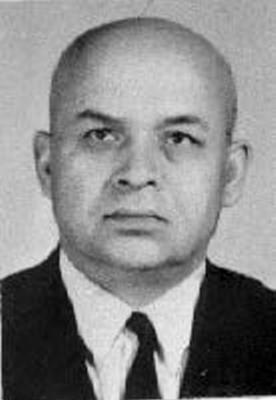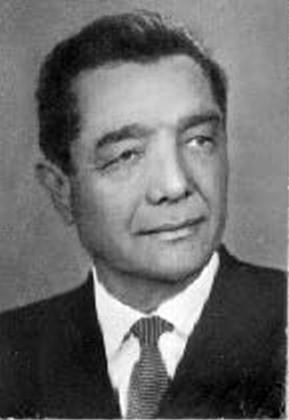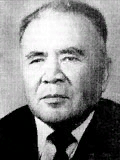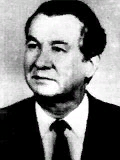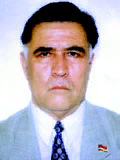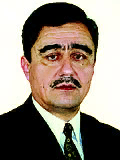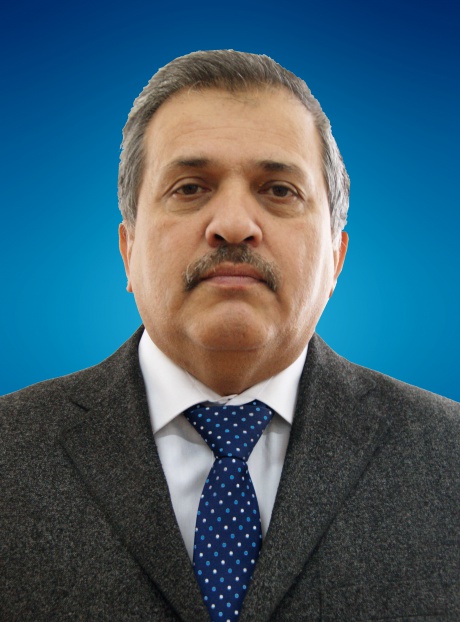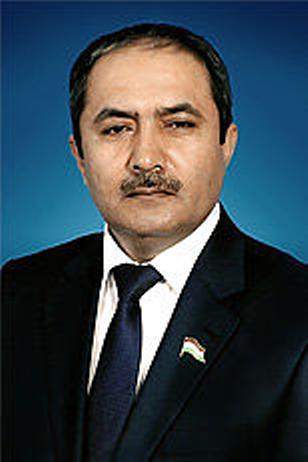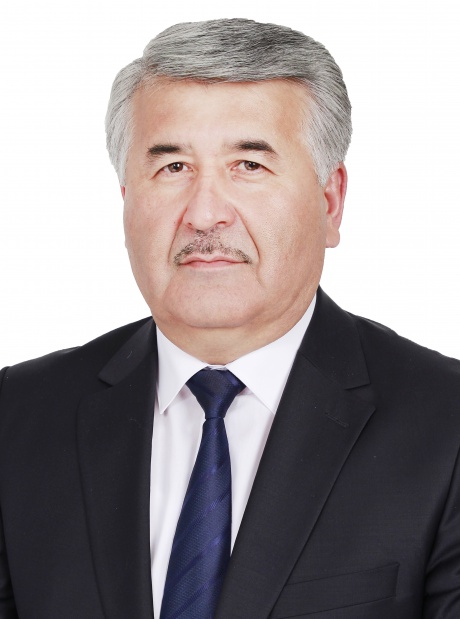The History of University
Avicenna Tajik State Medical University celebrates its glorious 85th anniversary. Describing TSMU history, we should note that medicine among Tajik people has a distinctive history, the origins of which go back to deep antiquity. The antiquity greatest scientists-doctors works, as Abuali ibni Sino (10th-11th centuries), enriched the treasury of world medical science, from whom many world doctors and scientists’ generations drew knowledge of medicine and mastery. It is known that the Ancient East civilizations have enriched humanity with an invaluable legacy, without which it is difficult to imagine the further world history, culture, and science and medicine development.
We should emphasize that in 1917 – 1924, Tajik medicine and healthcare practically did not develop: there were almost no medical institutions or medical personnel, some medical, preventive and sanitary-anti-epidemic works were carried out almost exclusively by military workers.
In 1924, the People's Commissariat of Health of the Republic has been established as part of the government of the Tajik Autonomous Soviet Socialist Republic (East-Bukhara health department was abolished). However, the newly created People's Commissariat of Health had to start all over again, almost from scratch. In connection with the revolutionary events that took place in 1917-1918. also in Central Asia, the functioning small network of medical institutions was eliminated, and medical personnel dropped out to the central regions of Russia. The formation of the Tajik Republic created real prerequisites for its political, social, economic and cultural development; in solving important problems, some attention was paid to the protection and improvement of the health of the working masses, the solution of which began in the second period, which covered 1924-1929, when Tajikistan was still an autonomous republic. Immediately after the formation of the Tajik SSR (1929), the problem of training medical personnel arose. The first major scientific expedition to Tajikistan arrived in 1930 which led by Martsinovsky E.M- Professor of the Central Tropical Institute who organized the fight against malaria. It shoued be particular note the merit of Academician E. N. Pavlovsky, who led and organized a number of major scientific expeditions to study parasitic diseases in Tajikistan; He was the organizer and leader of the Tajik branch of the USSR Academy of Sciences, established in Dushanbe in 1941. The first Tajik doctor, scientific malaria specialist, was U.M. Muminov who graduated from the medical faculty of the Central Asian University in 1931.
In 1933, at the request of the Council of People's Commissars (CPC) of the Tajik SSR in Stalinabad, on the territory of today's research institute for preventive medicine, a medical institute was founded. In those years, there were no secondary schools and applicants with completed secondary education in the republic, so it was decided to invite students of the first two courses of the Khojend Medical School to the new institute. Among the students were Zikrullo Khojaev, Usmon, Karim and Nabidzhon Akhmedov, Shakhri Khaidarov, Sharif Akhunov, Abdusattor Nurmatov, Zokhir Olimov, Islom Maksumov, Yuldosh Juraev and others. A.V. Knak Headed the Medical Institute, who previously worked as deputy director of the Khojand Medical Scool.
Education at the institute was conducted in Russian and Tajik languages. Anatomy was taught by the only professor in the institute A.V. Tikhonovich and the student Z.P. Khodjaev translated into Tajik. After two years of operation, the university was closed due to the lack of appropriate conditions, in particular, a weak material and technical base, and a shortage of highly qualified teachers. In 1935, students of the abolished medical institute were transferred to the Tashkent Medical Institute. However, in connection with the ever-growing need for health care, the issue of training medical personnel in the republic itself remained open, requiring urgent solutions. The Government of Tajikistan appealed to the People's Commissariat of Health of the USSR with a request to render assistance in organizing a medical institute in Stalinabad and provide it with scientific and pedagogical personnel, educational literature, etc. So, in 1939 the medical institute was again opened.
The organization of the Tajik Medical Institute is one of the brightest pages in the history of the republic, the formation and development of medical science, higher medical education and public health. All achievements of the Republic's health care system are inextricably linked with the activities of the institute.
In 1939, A.A. Kraus was appointed as a medical institute’s head. The first Medical Institute Director, A.A. Kraus, his deputies P.V. Sipovsky and A.M. Lobanov created all the necessary conditions for the admission and training of students. On September 1, 1939, 97 students were enrolled in the first course of the medical faculty, including more than 20 people of local nationalities, of whom only four - A. Kalonov, K.К. Karimov, S.M. Khakimov and M.Ya. Rasuli - graduated from the institute in 1943, while other students - V.K. Khamidov, M.Z. Usmanov, I.I. Islamov, M. Yakubov, DD Dekhkanov and others - from the first and second years were drafted into the ranks of the Red Army, and sent to the front of the Great Patriotic War of 1941-1945.
Unlimited energy and wills allowed A.A. Kraus to direct the education process in the right direction in the shortest possible time. He applied to medical institutes in Moscow and Leningrad for help in equipping the institute with teaching and visual aids, and providing teaching staff. As a result, in the 1939-1940, eight institute departments, a library and the only medical faculty began their activities.
During the Second World War A.A. Kraus supervised the number of evacuated hospitals work, he attracted the best and the smartest specialists who did a great deal of research to improve the wounded treatment.
A.A. Kraus entered the history of the Tajik people not only as a prominent statesman, but also as a talented organizer and one of the founders in the field of health care in Tajikistan. He laid the "first brick" in the organization and construction of the Tajik State Medical Institute, paved the way for further growth and development of higher medical institutions.
In the 1939-1940, major scientists from Moscow and Leningrad came to Stalinabad from central universities in order to read the first lectures: in biology and parasitology - academician E.N. Pavlovsky, on anatomy - professor L.А. Shangina). In the same academic year, the Department of Chemistry (head - PA Turdakov), physical education (head - EK Kolokifas), histology (head - PV Sipovsky), physics (head - IA Malkov), anatomy (head - VG Ukrainian), biology (head - VG Ostroumov), languages (head - AB Drucker), and in the next academic year a few more departments: biochemistry (head - VS Ilyin), normal physiology (head - AP Zhukov), fundamentals of Marxism and Leninism (head - BN Franz). At that time, four candidates (V.G. Ostroumov, L.Sh. Radjabov, V.G. Ukrainsky, V.S. Ilyin) and one doctor of science (P.V. Sipovsky) worked at the medical institute.
At the beginning of the Second World War, the departments of Microbiology (head - MP Perekhozhev), Pathological Physiology (head - V. Peshkovsky), Pathological Anatomy (head - PV Sipovsky), pharmacology (head - V. E Mayevsky), propedeutics of Internal diseases (head - PN Stepanov), General Surgery (head - GP Kovtunovich) were opened.
We should note that in 1946 there were about 20 doctors of local ethnicity in Tajikistan. To the graduate degrees were sent Z.P. Khodzhaev (surgery), S.Kh. Khakimov (obstetrics-gynecology), Ya.A. Rakhimov (anatomy), H. Khalilov (dermatovenereology), and to the doctoral program - M.K. Kulmatov (therapy), Z. S. Kasimova (therapy), A.Z. Zahidov (hygiene). Many of them returned to their homeland and began to work in the medical institute.
In the 1948/49 academic years, the institute moved to a 6-year study. On the 6th year of study, a large number of class hours were assigned to leading disciplines - Therapy, Surgery, Obstetrics and Genecology; at the same time special departments were created.
In the preparation of a qualified pedagogical and scientific shift, a significant role belongs to the postgraduate study created in 1943. Currently, post-graduate education prepares personnel in all medical specialties.
Since 1949, the Institute has a clinical internship, in which only 28 people studied at the beginning.
The Council of Ministers of the Tajik SSR head, D.R. Rasulov, President of the USSR Academy of Medical Sciences N.N. Burdenko, Minister of Health of the USSR G.A. Miterev had a significant role to solve those problems.
This undertaking became a tradition and lasted for several years. Later, the training of scientific and pedagogical personnel began to be carried out in the republic mainly by the institute itself. We should note that among Tajik doctors who defended their thesis in 1949, Y.A. Rakhimov became the first medical scientist, who headed the Medical Institute for 1950 to 1957. Yahyo Abdulloevich Rakhimov - a well-known organizer of health and science, doctor of medical sciences, professor, corresponding member of the Academy of Sciences of the Republic of Tajikistan since 1953, Minister of Health of the Republic of Tajikistan, laureate of the State Abuali ibni Sino Prize.
Thus, over the past 1939-1949. The material and technical base of the university is being created and strengthened at Avicenna State Medical Institute, the necessary departments are organized and staffed with appropriate teaching staff, the educational process is being adjusted, the requirements of wartime are being fulfilled, scientific and teaching staff are being prepared with local nationalities.
It is necessary to emphasize that the medical university activity until 2005 on the formation of students’ contingent, the level of highly qualified specialists’ trainings, the educational process organization, scientific research, teaching staff qualitative composition, the state of material and technical base needed very serious improvement.
Since February 2016, the doctor of medical sciences, professor Gulzoda Mahmadshoh Kurbonali, who worked as vice-rector for science and innovation at the ATSMU, was appointed as a head of the University.
Thanks to the ATSMU professors and teachers’ flawless high professionalism and the education system, in September 2008, the ATSNU was awarded the international prize "European quality" by European Business Assembly (EBA).
Among our university educators, many prominent public health organizers came out like: K.Y. Akhmedov, G.K. Pulotova, A.A. Akhmedov, D.I. Inomov, N.A. Abdujabborov, A. Abdulloev, M. Mirzobekov, M. Mamasidikov, I.S. Rajabov, D.K. Rakhimova, M. Temurov, A. Khakimjonov, M. Musaeva, A. Aliev, M. Jalilov, B. Gadoev, S. Ibodov, A.P. Peer, H.K. Rafiev, N.F. Salimov, Sanginov D.R., N.F. Faizulloev, U.A. Kurbanov and others.
Today many Tajikistan Medical University graduates successfully work not only in our republic, but in more than 40 world countries, including the Russian Federation, the CIS countries, England, Germany, the USA, Iran, Afghanistan, China, Turkey, India, Yemen, and some African states.
Tajikistan medical scientists are contributing to the further improvement of the organization and quality of research, increasing their efficiency and incorporating the results of research into the practice of health authorities and institutions. This contributes to the effective preventive and other measures complex development for the public health protection and promotion, taking into account the climatic and geographical features of Tajikistan and the high growth rate of its population.
University planned to prepare and publish textbooks, increase the dissertations number, increase the teaching and educational work level and the students' knowledge level, preserve faculty members, increase the teachers and other university workers’ salaries, periodically hold scientific forums, meetings and conferences, landscaping the university, to construct new complex. Several multi-storey student dormitories and sports complex: universal halls, an indoor swimming pool, basketball, volleyball and tennis courts will be built.
The University aimed to improve the research work conditions. Research will be developed on the basis of the university-wide electron microscopy laboratory. In addition to creating the necessary laboratories, the construction of a scientific center with modern computing equipment is envisaged.
The main task is to systematically improve the quality of training of future doctors, specialists of an important, necessary and noble profession, guarding the lives and health of people, the TSMU team will continue to try to perform with honour. The Tajik State Medical University named after Abuali ibni Sino celebrates its 85th birthday with worthy success - this is the preparation and publication of educational literature, an increase in the number of dissertations defence, an increase in the level of educational work and the level of students' knowledge.
Over the past 85 years, the medical university has achieved significant success, has risen high, has earned recognition. Nowadays, the university has even more complex, responsible and important tasks. It is safe to say that a strong, cohesive, friendly team of the Tajik State Medical University named after Abu Ali Ibn Sino will be able to solve these problems with honor and dignity.

.jpg)
